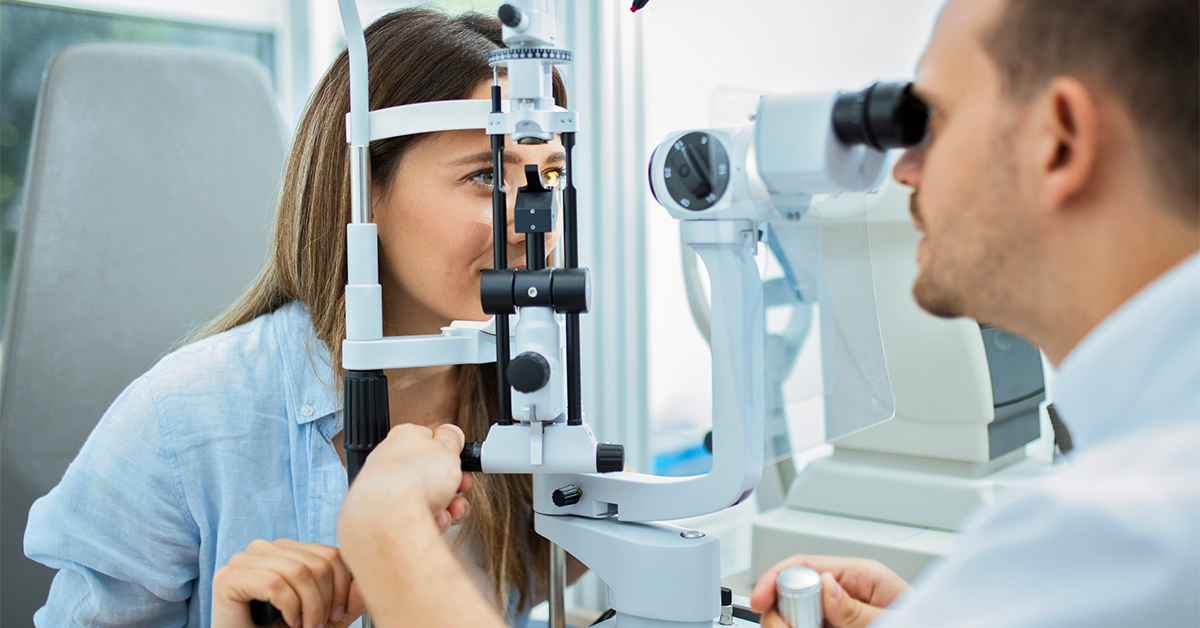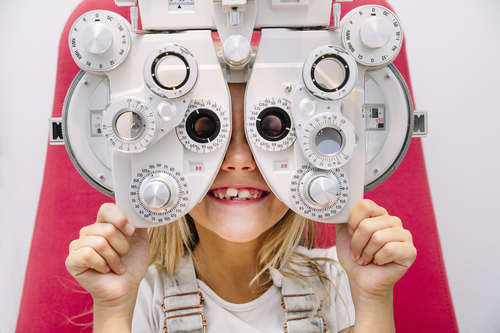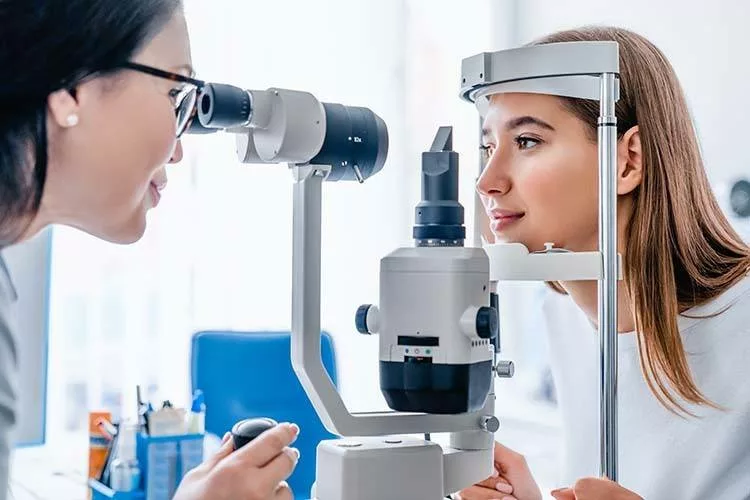Top Factors to Go To an Optometrist Chino for Your Eye Health
Top Factors to Go To an Optometrist Chino for Your Eye Health
Blog Article
Exploring the Most Current Technical Innovations in Optometry and What They Mean for Eye Doctors
In the ever-evolving field of optometry, recent technological advancements are reshaping just how experts come close to eye care. From the precision of Optical Comprehensibility Tomography to the nuanced insights offered by AI-driven analysis tools, these innovations are setting brand-new criteria in individual analysis and therapy. Teleoptometry is positioned to redefine access, making certain that competence transcends geographical restrictions. As these advancements penetrate the practice, eye doctors are encountered with the difficulty of accepting these devices to enhance client results. The question continues to be: how will these technical shifts redefine the roles and responsibilities within the profession?
Advancements in Diagnostic Tools
Advancing the field of optometry, innovations in analysis tools have revolutionized the means eye care experts analyze and identify visual disabilities and eye conditions. The past years has actually seen significant technological developments, making it possible for more precise and thorough evaluations. Optical Coherence Tomography (OCT), for example, supplies high-resolution cross-sectional pictures of the retina, permitting the early detection of illness such as glaucoma and age-related macular deterioration. This non-invasive imaging method has actually ended up being indispensable in contemporary optometric practice.
Another key technology is the intro of advanced corneal topography systems, which map the surface area curvature of the cornea with precision. These tools are specifically useful for fitting get in touch with lenses and diagnosing corneal conditions. In addition, digital retinal imaging has actually changed conventional ophthalmoscopy, using detailed, breathtaking views of the retina that assist in extensive visual assessments.
The advancement of wavefront aberrometry has actually additionally been important, making it possible for the analysis of refractive errors with unrivaled accuracy (Optometrist Chino). This innovation helps in customizing corrective lenses and boosting medical results for refractive surgical procedures. Jointly, these diagnostic advancements empower optometrists to supply exceptional client care, making certain very early treatment and customized therapy techniques, inevitably improving aesthetic health end results
AI in Individual Monitoring
Structure on the foundation of cutting-edge analysis tools, the consolidation of expert system (AI) in individual monitoring represents a transformative leap for optometry. AI systems are progressively employed to boost effectiveness, precision, and customization in client treatment. By examining large amounts of information, AI can identify patterns and anticipate potential eye problems, making it possible for eye doctors to customize interventions extra effectively. This capability is important in taking care of chronic eye illness such as glaucoma and diabetic person retinopathy, where very early discovery and continuous surveillance are vital.
In addition, AI-driven platforms assist in structured individual interactions and administrative procedures. Automated scheduling, virtual examinations, and individualized follow-up plans not only improve individual satisfaction yet also enhance time monitoring for practitioners. These systems can triage individuals based on the necessity of their conditions, making sure that those in essential demand receive timely focus.
Moreover, AI enhances decision-making by giving optometrists with evidence-based recommendations and treatment paths. By incorporating information from digital health and wellness documents, AI tools provide understandings that inform professional choices, decreasing the danger of mistakes and boosting client outcomes. As AI remains to develop, its duty in client administration will likely expand, improving the landscape of optometric treatment.
Advances in Retinal Imaging
In the realm of optometry, retinal imaging has actually experienced amazing technical innovations that are enhancing analysis capabilities and client treatment. Advancements such as Optical Coherence Tomography (OCT) and fundus photography have changed how optometrists examine the retina and picture. OCT, particularly, provides high-resolution, cross-sectional photos of the retina, enabling the thorough evaluation of its layers. This capacity is invaluable for early detection and management of conditions like glaucoma, diabetic retinopathy, and age-related macular deterioration.
Boosted imaging techniques like OCT angiography are additional refining diagnostic precision. Eye Doctor Optometrist. Such advancements help with the recognition of min retinal changes that might indicate disease progression.
Additionally, innovations in expert system are increasing retinal imaging by making it possible for automated evaluation of large datasets. These systems aid optometrists in recognizing patterns a measure of pathology, therefore boosting diagnostic accuracy and effectiveness. Jointly, these advancements are transforming retinal imaging right into a foundation of modern eye treatment, boosting results and expanding therapeutic possibilities.
Teleoptometry's Expanding Function
Teleoptometry is progressively becoming an important element of eye care, driven by innovations view it now in digital interaction and diagnostic devices. As optometry welcomes electronic transformation, teleoptometry helps with remote examinations, permitting optometrists to prolong their services beyond conventional borders. This is specifically helpful in underserved and country locations where accessibility to specialized eye care is usually limited. By leveraging high-resolution video conferencing and progressed retinal imaging, optometrists can perform extensive eye tests from afar, ensuring prompt medical diagnosis and therapy.
The assimilation of expert system (AI) further enhances teleoptometry, enabling the evaluation of aesthetic data and assisting in the detection link of eye conditions such as glaucoma and diabetic retinopathy. AI-powered formulas can rapidly translate complex imaging data, providing optometrists with beneficial insights that strengthen medical decision-making.
In addition, teleoptometry sustains continuity of care with smooth assimilation with electronic health and wellness documents (EHRs), allowing optometrists to maintain extensive person backgrounds. This guarantees that individuals obtain constant and customized treatment even when consulting with various professionals.
Regardless of these benefits, difficulties stay, including ensuring data safety and taking care of client expectations. However, teleoptometry stands for a significant stride towards even more available, effective, and patient-centered eye care. As modern technology develops, its duty is poised to broaden better.

Future Patterns in Eye Care
A myriad of ingenious fads is readied to improve the future of eye care, driven by technical innovations and the developing requirements of individuals. One considerable pattern is the assimilation of fabricated knowledge (AI) in diagnostics, which guarantees to enhance the precision and effectiveness of eye assessments. AI algorithms can evaluate substantial quantities of information from retinal pictures, potentially discovering problems like diabetic retinopathy and glaucoma earlier than conventional approaches.
Furthermore, tailored medicine is acquiring grip in optometry, with hereditary testing educating customized treatment plans. This method intends to maximize person end results by customizing treatments to private hereditary accounts. Wearable innovation, such as clever contact lenses, is additionally imminent, providing real-time tracking of intraocular stress or sugar levels, hence offering continual understandings into systemic and ocular health and wellness.
The fostering of augmented fact (AR) and digital truth (VR) in training and person education is an additional arising trend. These innovations use immersive experiences that anchor can enhance understanding and abilities both for patients and optometrists. As these fads progress, eye doctors need to remain abreast of technological advancements to offer advanced care, making certain better client outcomes and fulfillment in the vibrant landscape of eye treatment.
Conclusion

Jointly, these analysis innovations equip optometrists to supply remarkable individual care, making certain very early treatment and customized therapy techniques, eventually improving visual health and wellness end results.

As these technologies continue to advance, optometrists need to adjust and incorporate them right into method, inevitably optimizing process performance and raising the criterion of eye treatment delivered to clients.
Report this page